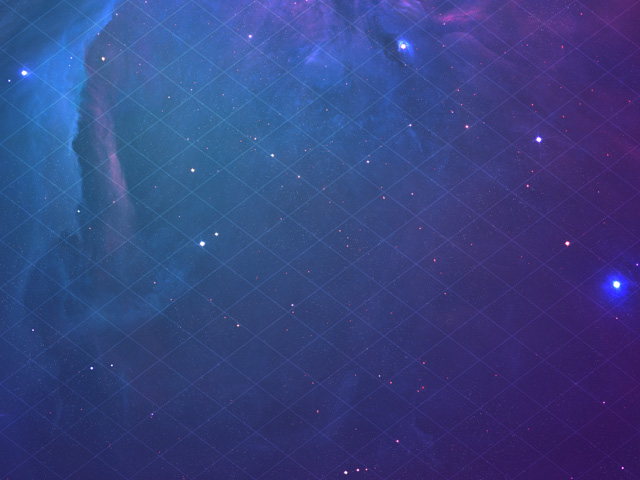

Part 3: Getting it right
If I was ever going to finish the game before my savings ran out, I had to drop all this pretentious crap about epic stories and hard sci-fi. Just make a functional game. Is that so hard?
Man, just make it like Star Wars. Everything doesn't need an explanation. People just want to see spaceships blowing the crap out of each other. And make it pretty while you're at it.
"But that won't earn me respect from my peers! That wont… wait what are you…" *BLAM* I shot that asshole.
Game plan: Backgrounds, Structures, Ships, Levels, Menus, Fast, Go!
Backgrounds: Must be pretty but shouldn't scream at the player. The player has to focus on the units.

Good! Not very interesting on its own, but when you put structures and units on top of it, it will look alright. I hope. I placed the grid there to help me visualize the isometric perspective, and I decided to keep it because it made things look more "tactical".
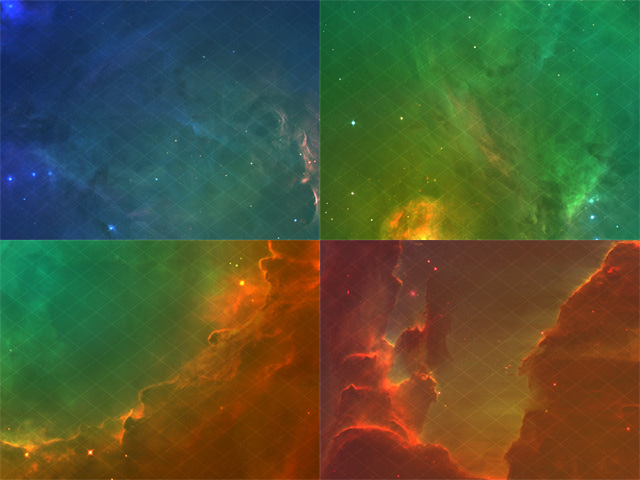
Colors! If I change the color palette every few levels, maybe it will trick the player into thinking he's traveling to different locations. And going on an epic journey.
Backgrounds completed! Now lets jump back into 3DS Max and make some ships and structures.
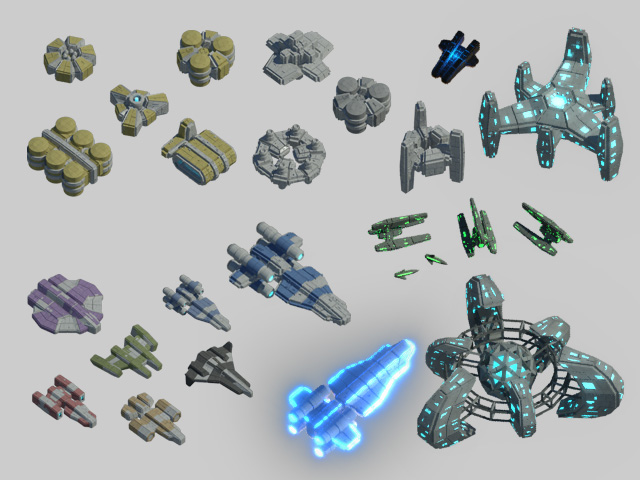
I modeled out everything I thought I'd need. Structures with different purposes, ships with different characteristics, and even some alien-looking things.
Then I rushed blindly into the level design. Plop down some basic structures first. Introduce the player into all the concepts slowly.
I made the decision early on that you would only be able to produce one type of unit. No more rock-paper-scissors mechanics. On screen, these units were tiny and it would be hard to distinguish one unit type from another. Also, I figured it would be difficult to have to select different units types on the iPad. The controls needed to be simple.
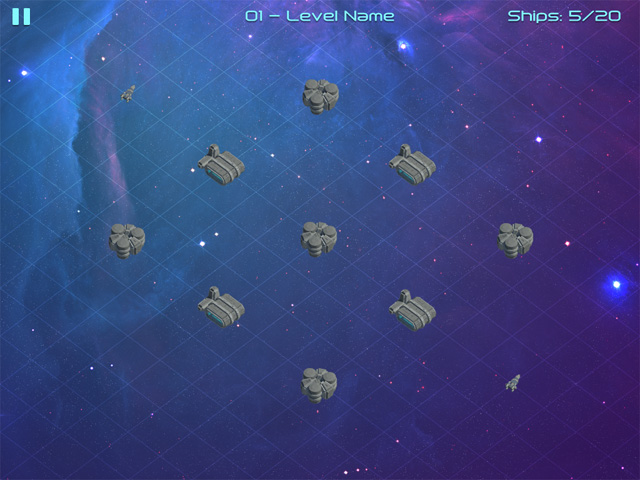
As I was building the levels, I realized that to create interesting gameplay I only really needed two types of structures: Production, and Supply. Production structures would produce ships at a steady rate. Supply structures increased the number of ships you could support at one time. The strategy would revolve around capturing these structures.
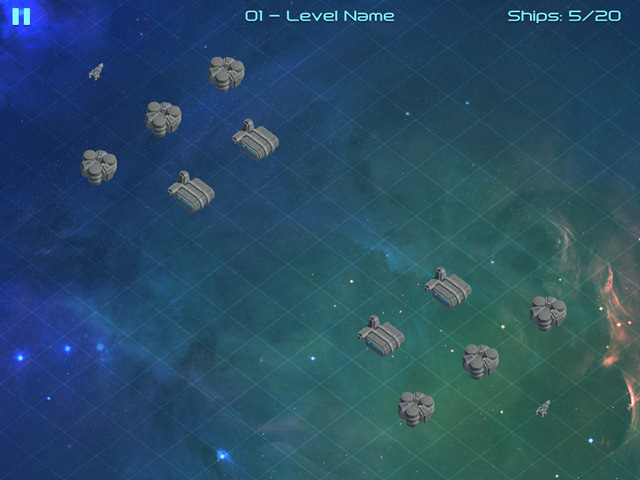
Every few levels I would introduce a new faction whose units had different characteristics. One faction had speedy units. One had tough but slow units. This changed up the gameplay just enough to keep it interesting.
I wished I had spent more time designing levels than experimenting with concepts. The levels were super important to creating fun and interesting gameplay in a strategy game.
The levels were also influencing which structures and units would stay, and which would be dropped. If I couldn't build an interesting level with it, it was useless.
25 levels later, I had my final set of structures and units:
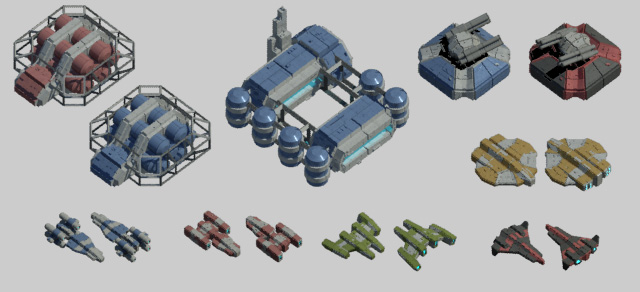
The structures only needed to be rendered once per team color since they didn't move, but the ships had to rotate whenever they changed direction. I used the animation features of 3DS Max to rotate each ship 360 degrees over 64 frames.
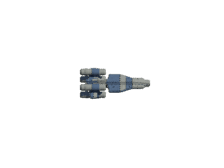
There was one trope of strategy games that I wanted to do away with: life bars. They were a necessary evil in most games, but I couldn't stand them. I spent all this time making sure my graphics look good, and then I have to cover it up with a lifebar!?
I thought about space battles in the movies. No life bars there. When something gets shot, it explodes. That's what you expect to see. After thinking about it for a while, I decided to try out a new combat mechanic:
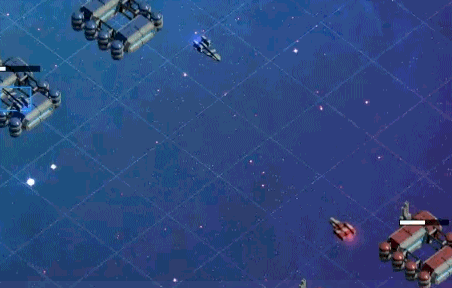
It's a bit hard to see what's going on in the gif, but I implemented a new system of missiles vs point defenses. When in range of an enemy, our ship would fire a missile at it. The missile would then track the enemy independently and attempt to hit it.
At the same time, the enemy would have fired it's own missile at our ship. Each ship has a point defense gun that would try to shoot down the incoming missile. It would fire 3 times at the incoming missile, each bullet having a 50% chance of shooting it down.
Sometimes the missile would make it past all 3 bulllets and destroy the ship. Sometimes the ship would get lucky and shoot down multiple incoming missiles.
It worked better than I expected. It made the ship to ship combat exciting to watch. No more staring at life bars. There was a bit of luck involved, but you could still affect the outcome of a battle by making sure to group ships together for mutual protection.
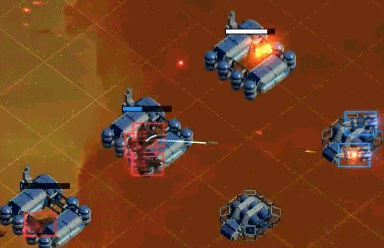
During this time I was also working on the AI. "Artificial Intelligence" sounds intimidating, but the truth is that it's actually very simple. It's nothing more complex than a couple of if...then...else statements.
Despite its simple behavior, the AI proved challenging to beat because it could always out-multitask you. The first time it beat me I felt quite proud of it. I called it my "idiot child". I actually had to slow down the speed at which the AI gives orders because it was too hard.
I tried putting 4 AI factions on one map to see how they'd fight it out:
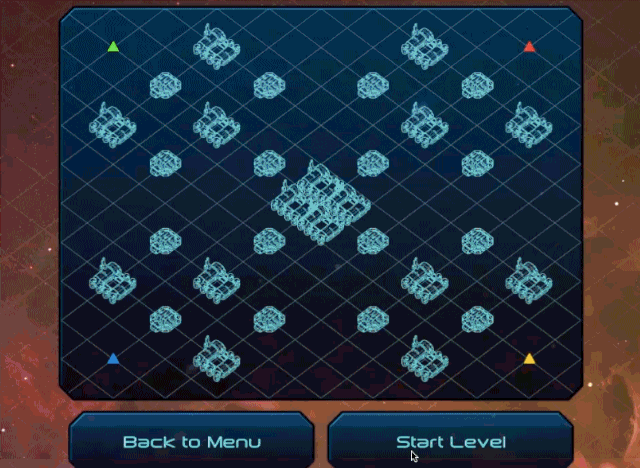
It was a space battle! A space strategy battle! For me it was glorious to behold. I loved it.
This was it. This was the point where I knew I had a game that was going to see the light of day. People needed to play this. I would not abandon it.
The only problem was that my 3 months were up.
So I swallowed my pride and asked my wife to pay for next month's expenses. And maybe the month after that. Thanks honey! (I'm a terrible husband, all I do is sit at the computer all day)
It is now mid-August. I am in my 4th month of development and the game is coming along quite nicely. My thoughts have shifted from development to monetization. This game better pay some damn bills for all the trouble it was worth.
I'll keep this thread updated with my efforts to make some money out of the game. I'll try to post sales figures when I can. Haha, sales figures... maybe I am getting ahead of myself. The game might just get buried under the app store.
In the meantime, here's a gameplay video of the latest build!
Thanks for reading!